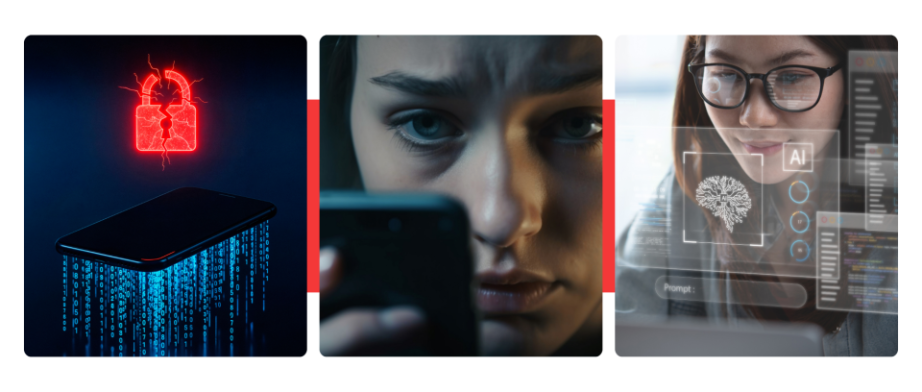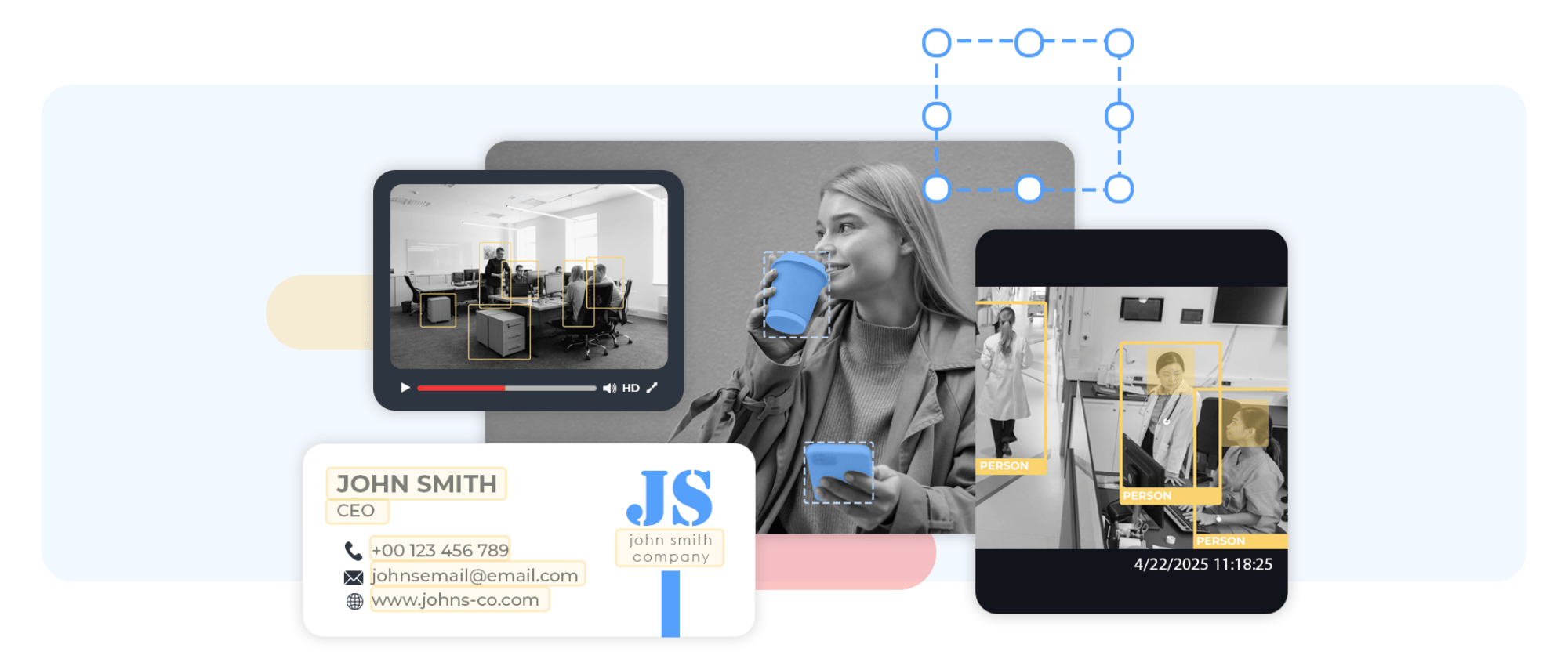Introduction
Peak season in customer support presents significant business challenges due to high consumer activity, frequent interactions, and a surge in service requests. Holidays, promotions, important events, and fluctuations in demand drive this phenomenon, placing considerable pressure on entire organisations to manage the chaotic influx of work, maintain quality levels, and ensure operational stability. To effectively navigate peak seasons, companies must focus on several key strategies, including correct forecasting, appropriate resource allocation and scalability of operations.
What is an online (digital) customer experience?
Digital customer experience (DCX) is a part of the overall CX strategy, focused exclusively on online engagement with buyers, enhancing their interactions and satisfaction through the website, chat, social media, e-mail, mobile app, and many other digital channels. In recent times, it has become a critical competitive advantage shaping most brands’ success in today’s digitalisation era, extremely effectively complementing more traditional CX approaches.
The evolution of technology marks the history of DCX significantly. It began with the emergence of the internet in its early stages, followed by the e-commerce boom that facilitated the transition from traditional to online services and gradually supported existing brick-and-mortar or solely voice brand-consumer interactions. Other milestones in transforming the digital customer experience included the widespread adoption of social media and the increased use of mobile devices with useful apps, further enhancing the popularity of virtual services and growing engagement with them. These all changed customers’ behaviours, contributing to their greater digital savviness while accessing information, interacting with each other, learning, managing finances or shopping. Eventually, the remarkable evolution of DCX has been propelled by automation, advanced artificial intelligence capabilities, and omnichannel management strategy, all of which have transformed the CX landscape and made the digital realm a powerful tool for businesses seeking to attract, delight, and retain today’s consumers across touchpoints.
Digital vs. traditional customer experience
It is also valuable to examine this issue more closely, comparing concepts such as digital CX and a traditional undertaking, which are essential components of the overall customer experience initiative. They shape how buyers perceive products and services, including quality, delivery speed, and assistance efficiency, impacting their choices to stay with the company or explore other options.
The primary distinction between “digital” and “traditional” customer experience lies in consumers’ channels and methods to interact with a brand or business. DCX is associated with online channels, while CX encompasses physical-world activities. Below are key differences between these two approaches to highlight their unique characteristics.
Digital Customer Experience
The Way of Interacting: Digital means & self-services.
Accessibility: Easy online or mobile access, typically 24/7, when the internet network is available.
Speed: Faster and more efficient interactions, often providing problem-solving at hand in an automated way.
Efficiency: In DCX, handling a large volume of interactions simultaneously with the same resources is achievable.
Type of inquiries: Simple and basic requests when human assistance is unnecessary.
Data Collection: Extensive opportunities for agile customer data collection and analysis.
Typical Technology: Digital self-service platforms, AI-driven chatbots, mobile apps, data analytics tools, multi-channel CRM systems, cloud-based solutions, and various online engagement technologies.
Key differentiator: Providing personalised and seamless experiences while offering efficient, real-time assistance at every touchpoint.
Traditional Customer Experience
The Way of Interacting: Face-to-face consultations or phone call interactions.
Accessibility: Limited access, depending on the opening hours and contact centre working time frames.
Speed: Time-consuming services, usually requiring more effort to handle issues completely.
Efficiency: In CX, the capability of serving inbound requests is limited, depending on the human resources available.
Type of inquiries: More complex issues needing human perspective and nuanced understanding.
Data Collection: Manual data entry and processing methods.
Typical Technology: Automated phone systems, appointment scheduling software, queue management solutions, legacy CRM programmes, communication tools, non-digital survey mechanisms, etc.
Key differentiator: Delivering empathetic human support for complex issue resolution or assisting customers with limited digital literacy or internet access.
However, despite their diverse capabilities, the best approach is to intelligently balance digital and traditional initiatives based on product specificity, goals, and target audience. Building robust and enduring customer relationships requires aligning CX with demographics, cultures, technological fluency, and social backgrounds. This can be achieved through relevant CX components, facilitating smooth transitions between touchpoints and adapting to evolving preferences. It is also essential to recognise that digitalisation will continue to advance, potentially influencing synergy even more.
Why is digital customer experience important for brands?
In the digital age, when an increasing number of consumers are present in the virtual realm, expanding CX processes is a must-have initiative and a key to fostering loyalty to a larger extent. DCX opens incredible new opportunities for companies to build lasting, meaningful relationships with their audience alongside still-appreciated and valued human-agent assistance.
Digital CX plays a pivotal role in the success of brands for several reasons. Among various factors primarily are:
- Competitive Advantage: Digital experiences allow companies to meet the demands and expectations of modern consumers who are well-versed in technology and expect seamless experiences whenever they engage with a brand, including virtual space. Diverse statistics support this statement. For instance:
80% of consumers will be more likely to return when a company provides outstanding digital CX.
(Source: Verint)
70% of buyers appreciate a hassle-free experience in their brand-customer interactions.
(Source: Oxford Economics & Adobe)
54% of the youngest are willing to switch financial institutions for a better digital experience.
(Source: The Financial Brand)
- Facilitated Interactions: DCX offers customers various options to engage with an organisation, its products, and services. This caters to their needs and preferences, minimises friction, and ensures inclusivity. These factors collectively contribute to increased engagement, heightened awareness, and greater satisfaction.
- Enhanced Retention and Loyalty: When feeling satisfied, consumers become loyal and committed brand advocates, often repeat purchases and usually avoid alternatives, which helps boost retention and secure future revenue growth. This can also lead to positive word-of-mouth recommendations, further strengthening the brand’s reputation.
- Meeting Expectations: Engaging buyers in digital touchpoints makes it convenient and practical to continuously collect data, analyse feedback and behavioural signals from visitors and extract valuable insights. These enable companies to react in a way that resonates with users proactively, take appropriate corrective actions and make relevant improvements for future success.
- 6. Global Expansion: Digital-first businesses can efficiently engage with a global audience, extending their market and customer base without substantial investments in physical infrastructure or extensive local presence.
What is a digital customer experience strategy?
Like the traditional CX approach, DCX activities should be purposeful, guided, and systematic. A thoughtfully planned and effectively executed strategy is the key. This game plan typically includes a set of tactics, methods, processes, tools, and solutions to deliver optimal online experiences consistently and structurally to customers.
Some components are critical, and incorporating them into DCX guarantees exceptional digital experiences. For instance:
- Multi-channel Approach: At the start, DCX strategy must encompass all potential digital touchpoints where consumers interact with a brand – before, during, and after a purchase, allowing its smooth transition from one to another while maintaining brand promise and consistency. These may include:
User-friendly websites, e-commerce platforms, chat support, and personalised accounts for better shopping and services.
Self-service customer portals for account management and issue resolution, providing a digital knowledge base for FAQs.
Mobile apps for convenient and easy access, enhanced with in-app messaging functionality.
Social media for more accessible assistance and feedback collection.
Personalised text
communication via emails and newsletters, enhanced by the CRM software.
External sources with user-generated content, like online communities, forums or discussion groups.
- Data-driven Guidance: Generating data-driven insights is fundamental to the digital customer experience and a cornerstone for various activities. This relies on extensive data collection, including past interactions, feedback, web behaviour, online activities, and precise analysis. These findings reveal hidden patterns, offer suggestions, enhance decision-making, and enable successful advancement.
- A Deep Understanding of Customer Needs: The next step is customer journey mapping, where collected information is used efficiently. This process involves identifying buyer preferences, understanding their interactions with the brand, and anticipating their emotions at each touchpoint. It helps pinpoint areas for improvement and uncover opportunities to enhance positive experiences, delivering tailored support services at each stage of the customer’s journey.
- Putting Customers in the Centre: Personalisation is another natural outcome of using data-driven insights. It allows digital businesses to customise all interactions directed towards their target segments and deliver exactly what buyers genuinely expect. This may cover bespoke online support, catering assistance, relevant recommendations and specific communication, all aligned with user needs and preferences.
- Consistent Voices Across Channels: It means providing the same message, level of assistance, and overall brand experience, regardless of the communication method or touchpoint a customer chooses for interaction. This can be supported by a centralised information hub, such as a CRM solution, helping to provide a holistic view of everyone’s interactions while maintaining consistency.
- Data Privacy and Protection: Data security is a critical responsibility for companies that collect and manage user information. This task involves a commitment to data privacy, transparency, accountability in data processing activities, and safety. Data can be efficiently safeguarded by implementing security measures, such as encryption algorithms, multi-factor authentication, and secure data storage protocols.
How to manage digital customer experience (DCX)?
While DCX strategy primarily focuses on evaluating and shaping customer perception, DCX management takes a broader perspective, enabling companies to control and make iterative changes to constantly improve digital CX processes, skills or technologies while promoting engagement in the digital realm. Blending both methods helps ensure the fundamental infrastructure, operations, and resources are established to consistently offer memorable consumer experiences in the virtual landscape.
Effective management of digital customer experience (DCXM) involves continuous monitoring and evaluation of digital channels to identify and address issues along the customer journey that result in difficulties and abandonment. It also includes recognising opportunities for growth. This process leverages a range of powerful strategies and practices, including:
- Understanding customer experiences across all interaction points, serving as a foundation for strategic decision-making, risk mitigation, and problem-solving.
- Gathering customer feedback and tracking progress using relevant Key Performance Indicators (KPIs).
- Implementing changes, corrective actions and improvements, and monitoring their progress and outcomes.
How to measure digital customer experience efficiency?
Measuring the efficiency of digital customer experience is vital for businesses to understand the current state of satisfaction, loyalty, and overall performance. This data-driven approach enables companies to identify areas for improvement and adapt strategies to enhance business performance, which is also an important element of the DCX management strategy.
Continuous monitoring and evaluation of DCX metrics using relevant KPIs provide firms with an efficient and objective way to track the performance and the current state of specific areas within DCX, as well as measure progress toward specific goals. The basic and most common groups of metrics are:
- Loyalty Metrics These metrics assess customer loyalty and retention, helping gauge their commitment and the likelihood of continuing to do business with an organisation. Examples include Net Promoter Score (NPS), Customer Retention Rate (CRR), and Repeat Purchase Rate (RPR).
- Satisfaction Metrics These metrics are designed to help determine customer satisfaction based on their experiences with the company. They include metrics like Customer Satisfaction Score (CSAT) and Customer Effort Score (CES).
- Operational Metrics These metrics measure the efficiency of DCX processes, demonstrating how effectively customer queries and issues are handled. Examples are Average Handle Time (AHT), First-Level Resolution (FLR), and Abandoned Call Rate (ACR).
- Attrition Metrics: These metrics provide information about buyer attrition and churn rates, including Churn Rate and Customer Retention Rate (CRR).
Digital customer experience software for productivity
Digital customer experience software plays a pivotal role in enhancing productivity and ensuring the success of a DCX strategy. A relevant and well-fit tech stack can empower companies to offer faster, more efficient services, optimise interactions, reduce operational burdens, minimise errors, and gain a competitive advantage in the long term.
In practice, a well-rounded software ecosystem should encompass essential solutions that prioritise data management, streamline processes, ensure data security, facilitate integration and enable in-depth analysis, among other critical functionalities. Among them, the most common and critical are:
- Routine Task Automation (RPA) Solutions: These tools boost consistency in service quality, speed up data processing and analysis, allow for scalable and ongoing support, even during growth periods, and empower data utilisation.
- Ticketing Systems: This software helps categorise incoming issues by urgency and relevance, streamlining the customer support process. This reduces response times and ensures that inquiries are systematically managed, preventing them from being overlooked. Additionally, it allows for tracking the progress of the requests handled.
- AI-driven Chatbots: This technology offers 24/7 self-service support, aiding in resolving basic inquiries without immediate human intervention.
- Multi-channel CRM Software: These programmes allow streamlining, managing and measuring buyers’ interactions more efficiently when integrating all the engagement points, such as e-mails, SMS, instant messaging apps or chats, social media, and more.
- AI-powered Technologies: These include large language models (LLM), machine learning (ML), and natural language processing (NLP), providing the capability to deliver cutting-edge digital CX, irrespective of a company’s size or scope. They excel in rapidly and comprehensively interpreting data across the customer journey, enabling context-specific experiences by understanding human intentions and replicating behaviour without bias.
















